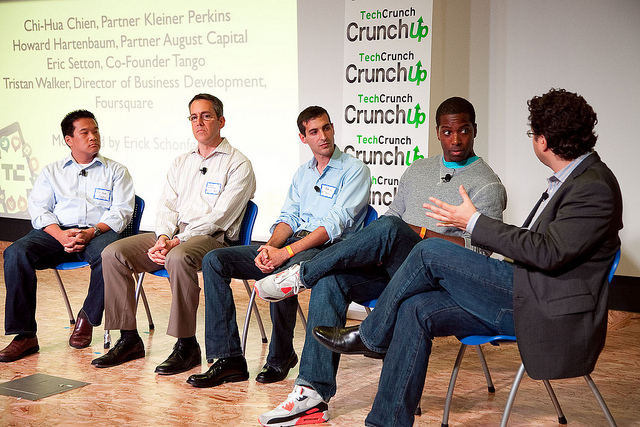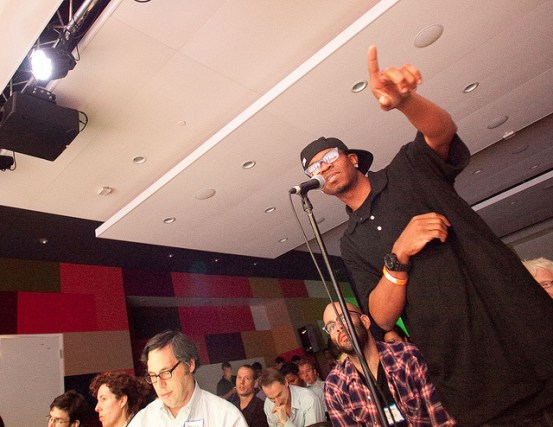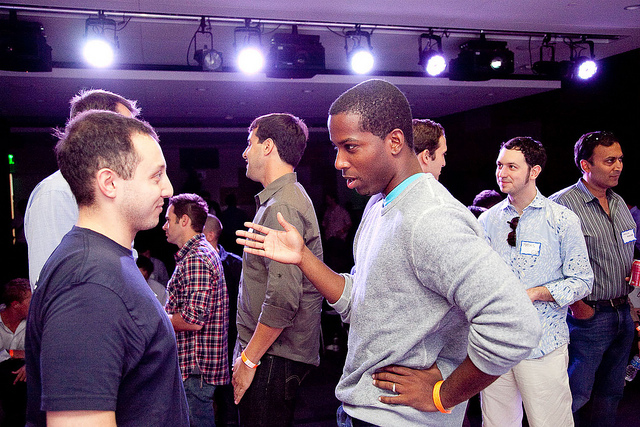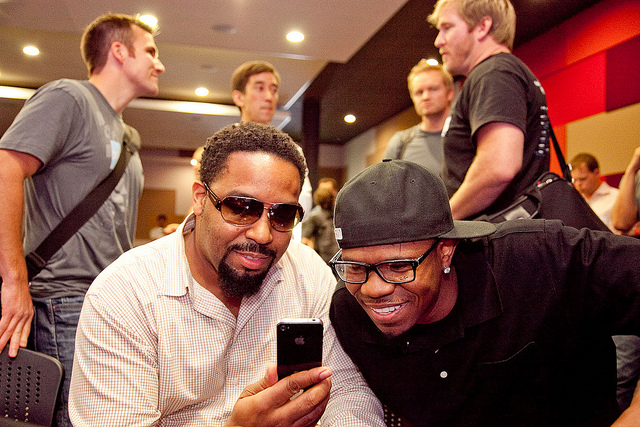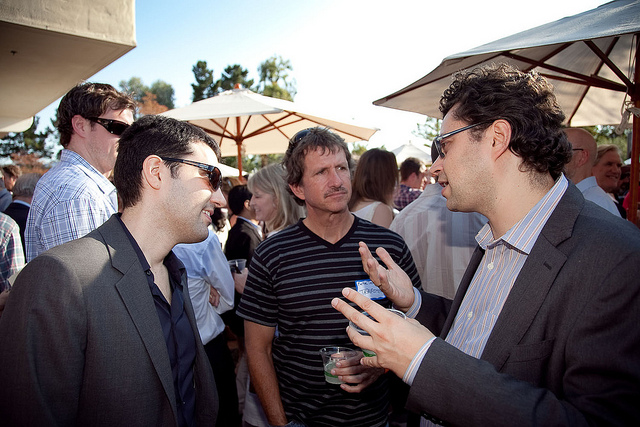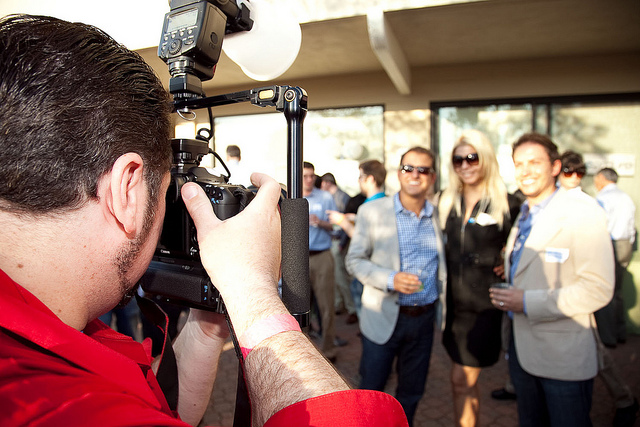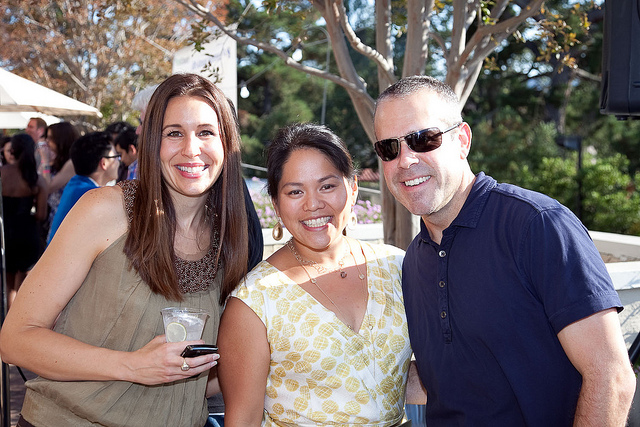Sponsored
Phone companies present rural broadband plan (AP) : Technet |
- Phone companies present rural broadband plan (AP)
- Google buys about 1,000 IBM patents (AP)
- F-16 Fighter Jet Crashes On Runway [VIDEO] (Mashable)
- Float Reader aims to make reading social, courtesy of Scribd (Appolicious)
- Why Android Isn't Popular (ContributorNetwork)
- Hashable Android app helps remember people you've met (Appolicious)
- Amazon flies high, may rise 25 percent more: Barron's (Reuters)
- Roboto leads iPad Games of the Week (Appolicious)
- Apple expected to launch line of HDTVs in 2012 (Digital Trends)
| Phone companies present rural broadband plan (AP) Posted: 29 Jul 2011 03:33 PM PDT WASHINGTON – AT&T Inc., Verizon Communications Inc. and four other telecom companies are offering a proposal to overhaul the $8 billion federal phone subsidy program to pay for high-speed Internet connections in rural and other underserved areas. They say the plan, which was filed with the Federal Communications Commission Friday, would bring broadband service to nearly all Americans within five years. The proposal is one of dozens that the FCC will likely receive as it seeks to bring the federal program, called the Universal Service Fund, into the digital age. The agency voted unanimously in February to begin drafting a blueprint to modernize the fund. But the new plan is particularly significant since it has the backing of six key telecommunications companies that are some of the biggest recipients of Universal Service dollars. In addition to AT&T and Verizon, the nation's two largest phone companies, the plan is supported by CenturyLink Inc., Fairpoint Communications Inc., Frontier Communications Corp. and Windstream Corp. "To truly bring broadband services to all Americans, the rules of the road for the black rotary phone desperately needed to be updated for today's competitive, high-speed communications networks," said Hank Hultquist, vice president of federal regulatory at AT&T. The Universal Service Fund was created to ensure that all Americans have access to a basic telephone line. It is supported by a surcharge on long-distance phone bills. The program subsidizes phone service for the poor and pays for Internet access in schools, libraries and rural health clinics. But more than half the money goes to pay phone companies that provide voice service in rural places where phone lines are unprofitable. The FCC now wants to tap the rural program, called the High Cost Fund, to pay for broadband too. It envisions gradually transforming the High Cost program into a new Connect America Fund that would underwrite the cost of building and operating high-speed Internet networks in places that are too sparsely populated to justify costly corporate investments. The agency's actions could have profound consequences not just for rural Americans still stuck with dial-up links or painfully slow broadband connections, but also for rural phone companies that rely heavily on Universal Service funding. The telecom company proposal takes aim at several key criticisms of the Universal Service Fund, including complaints by Republicans that the program promotes waste by subsidizing multiple rural phone companies in places where the free market doesn't support even one and by giving telecom carriers little incentive to keep their costs down. The telecom company plan would cap the size of the new Connect America Fund at $4.5 billion annually, provide subsidies for only one provider in an area and target funding at places where there is no business case for companies to provide service on their own. In addition, it would create an Advanced Mobility/Satellite Fund to provide mobile broadband access in some of the hardest-to-serve areas. The new proposal also seeks to overhaul the multibillion-dollar "intercarrier compensation" system, the Byzantine menu of charges that phone companies pay each other to connect calls and link their networks. Any changes to the Universal Service Fund would also require changes to intercarrier compensation because rural phone companies tend to rely heavily on both funding sources. The existing intercarrier compensation program is widely seen as outdated and irrational since phone company payments vary widely based on the type of carrier involved, the type of network traffic being exchanged and the distance that the traffic travels. The new telecom plan would set one low, uniform rate for these payments. The FCC welcomed the companies' proposal and the industry's efforts to tackle Universal Service reform. "We're pleased that many have taken up that challenge, and we will consider those proposals as we finalize reforms," the agency said in a statement. That was echoed by the top Republican on the Senate Commerce Committee, Kay Bailey Hutchison of Texas. "I am pleased to see such a diverse group of small and large telecommunications providers working together to find consensus, which is no small feat on this complex and difficult issue," she said. "I urge the FCC to continue the momentum generated by this proposal and to keep our nation's rural communities in mind as it moves forward with the reform process." |
| Google buys about 1,000 IBM patents (AP) Posted: 29 Jul 2011 02:55 PM PDT NEW YORK – Google Inc. has bought about 1,000 pending and issued patents from IBM Corp. in its quest to shore up its defenses against suits by other technology companies, according to documents filed with the U.S. Patent and Trademark Office. Google and IBM spokesmen wouldn't comment Friday on the purchase. The patent transfers were recorded two weeks ago and cover a range of technologies, many of which have little to do with Google's Internet search and advertising business. One covers ways of automatically adjusting a clock, another deals with surface treatments for electrical contacts. But even patents that have little do with Google's business can be useful ammunition in the hyper-litigious technology world. If it's sued over patents by a company whose business relies on technologies covered by Google's patents, Google can file a retaliatory lawsuit. Phone makers that use Google Inc.'s Android software are being sued by Apple Inc. and Microsoft Corp. As a young company, Google has few patents of its own to counter with. Kent Walker, Google's general counsel, wrote in a blog post in April that the explosion in patent litigation threatens to stifle innovation. "But as things stand today, one of a company's best defenses against this kind of litigation is (ironically) to have a formidable patent portfolio, as this helps maintain your freedom to develop new products and services," Walker wrote. Earlier this month, Google participated in an auction for a collection of 6,000 patents from Nortel, a bankrupt Canadian maker of telecommunications equipment. It was outbid by a consortium including Apple that paid $4.5 billion. In the past year, Google has also bought patents from Verizon Communications Inc. and Motorola Inc. The patent sale was first reported by the blog SEO by the Sea, which follows Google. |
| F-16 Fighter Jet Crashes On Runway [VIDEO] (Mashable) Posted: 30 Jul 2011 10:11 AM PDT [More from Mashable: Our Favorite YouTube Videos This Week: The Birthday Edition] An F-16 fighter jet ran off the end of a runway and crashed at the EAA AirVenture convention in Oshkosh, Wisconsin on Friday. The lucky Alabama Air Guard pilot wasn't injured, but it looks like that $20 million F-16 Fighting Falcon might need a serious overhaul. [More from Mashable: Surprise! Old Spice Guy Isaiah Mustafa Keeps His Crown [VIDEO]] The cause of the crash is unknown, but it appears that for some reason the pilot simply ran out of runway. As you can see, after a few tense seconds the pilot exited the aircraft and jogged away to safety. He was taken away in an ambulance and found to be unhurt. An Air Force team has begun an investigation into the cause of the accident. EAA AirVenture, originally known as the Experimental Aircraft Association's Fly-In Convention, is an annual event in Wisconsin, billed as "the world's greatest aviation celebration." [Via WBAY] This story originally published on Mashable here. |
| Float Reader aims to make reading social, courtesy of Scribd (Appolicious) Posted: 31 Jul 2011 10:30 AM PDT |
| Why Android Isn't Popular (ContributorNetwork) Posted: 31 Jul 2011 01:31 PM PDT Contribute content like this. Start here. There are more smartphones powered by Android, Google's operating system for smartphones and tablets, than there are iPhones or BlackBerries right now. Because of that, a lot of people (like Alex Wagner of Phonedog) have started calling it the "most popular" mobile operating system. If by "popular" they mean "well-liked," though, then Android fails. Hard. It's not easy being green According to a study conducted by ChangeWave Research, 50 percent of Android smartphone users are "very satisfied" with Android. This is a heck of a lot better than BlackBerry and Windows Phone users' satisfaction ratings, which hover around 25 percent. And if 50 percent of Android users are "very satisfied" with it, one can only imagine that even more than 50 percent are at least a little satisfied with their phones. The iPhone's satisfaction rating, though, is much higher, at 70 percent. And John Biggs of TechCrunch reports that, according to "a person familiar with handset sales for multiple manufacturers," the return rates for many Android smartphones are "approaching 40 percent." While anecdotal and not supported by evidence, this story rings true to me. Because Android wasn't designed for most people to use, in my opinion. Instead, it was designed for two groups of people: Smartphone manufacturers and wireless carriers Make no mistake. While the iPhone was designed to be the perfect smartphone -- perhaps because Steve Jobs was annoyed by existing smartphones -- Android was merely designed to make the carriers and manufacturers money. Because of this, both do a number of things that are hostile to their customers. The wireless carriers load their Android phones down with "trashware" apps, like trial versions and services that cost money, which you can't uninstall without rooting your phone. (And if you don't know what that is, you shouldn't try to do it yet, either.) Meanwhile, smartphone manufacturers take a shotgun approach to designing smartphones, making a colossal assortment of phones that are designed for the dump and meant to be thrown away in a year or two. Not only is it hard to tell which Android phone is the "best," it's hard to even tell which would be best for you. And the most affordable handsets are also the most disposable, and the least capable of running games and apps. I'm not surprised to hear that some of these smartphones may have sky-high return rates. Is Android for you? Just because everyone's using it doesn't mean you should. I'm personally an Android fan; I use an HTC Aria that I bought last year, and I love it. I'm tolerant of its quirks, though, in a way that others might not be. That's because, as a side effect of Android being "open" to the carriers and manufacturers, it's also open to people like the "community knowledge workers" who help poor farmers in Uganda. And to anyone else, who wants to build or improve an Android device. I think the iPhone is great, but I support open-source software like Android because I feel the next Steve Jobs may need it to work his or her magic. If you're not the next Steve Jobs, though, you ought to buy what you'll be the happiest with ... not just what's the most popular, or what the salesperson recommends. It's more environmentally friendly to keep the same smartphone for a long time, and it's friendlier to your wallet as well. Jared Spurbeck is an open-source software enthusiast, who uses an Android phone and an Ubuntu laptop PC. He has been writing about technology and electronics since 2008. |
| Hashable Android app helps remember people you've met (Appolicious) Posted: 31 Jul 2011 12:00 PM PDT |
| Amazon flies high, may rise 25 percent more: Barron's (Reuters) Posted: 31 Jul 2011 08:44 AM PDT NEW YORK (Reuters) – Amazon.com Inc shares, just below their all-time high, could rise 10 percent to 25 percent if its capital spending translates to fast growth in its retailing, Kindle e-readers and cloud-computing businesses, Barron's said in its August 1 edition. On July 26, the online retailer posted a 51 percent jump in quarterly revenue to $9.91 billion, while saying profit fell 8 percent to $191 million, or 41 cents per share. The profit decline was smaller than analysts expected, however, and Amazon shares reached an all-time high of $227.20 the next day. They closed Friday at $222.52. A 25 percent increase from their projects to a $278.15 stock price. Barron's said investors often worry about a disconnect between higher revenue and lower profit. But it said Seattle-based Amazon has a 14-year history of driving higher revenue at the expense of margins by investing aggressively in technology, distribution and real estate. It said Amazon was now spending money to build fulfillment and distribution centers, build data centers for its Amazon Web Services cloud unit, and expand its Kindle franchise. The newspaper said that while Amazon stock trades at close to an "unthinkable" 107 times expected 2011 profit, it may be "pragmatic" to compare Amazon with Wal-Mart Stores Inc 20 years ago, when the latter's revenue grew 35 percent to $44 billion. It quoted an analyst as saying Amazon's revenue could in 2011 increase 43 percent to $49 billion, but that "it's better" than Wal-Mart because its storeless business model could result in higher long-term economic returns. (Reporting by Jonathan Stempel, editing by Maureen Bavdek) |
| Roboto leads iPad Games of the Week (Appolicious) Posted: 31 Jul 2011 01:00 PM PDT |
| Apple expected to launch line of HDTVs in 2012 (Digital Trends) Posted: 31 Jul 2011 07:39 PM PDT Analysts are the soothsayers of the business world, so take this news with the appropriate helping of salt grains. Trip Chowdhry of Global Equities Research informed investors today that he believes Apple will launch a line of HDTVs starting next year, Apple Insider reports. The belief is based on "details culled from a number of developer events he attended," the site writes. Chowdhry believes that the new TVs will launch in March 2012, with training sessions to follow that summer at Apple's Worldwide Developer's Conference. The product being prepped apparently compares the closest with the Bose VideoWave, a 46-inch set with built-in stereo surround speaker. That's the only model Bose sells, with an attached cost of $5,200. Chowdhry's prediction accounts for three Apple televisions, with multiple sizes and price points. The analyst makes a number of other predictions about the TV, claiming that it will be one-third the thickness of the six-inch VideoWave and that it will come packing 16 speakers, just like the Bose set. The Apple offering is also believed to sport a DSP chip, which is “a brand new chip based on Apple’s acquisition of PA Semi,†Take none of this as fact of course, though signs are pointing more and more toward Apple eventually releasing some kind of TV-like device. The tech specifications will probably surprise us in a few ways, but the big question at this point is "when?" Do you think March 2012 is an accurate estimation? |
| You are subscribed to email updates from Yahoo Tech News To stop receiving these emails, you may unsubscribe now. | Email delivery powered by Google |
| Google Inc., 20 West Kinzie, Chicago IL USA 60610 | |


































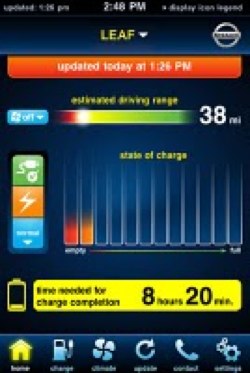 3. Stephen Colbert will
3. Stephen Colbert will 
